|
|
|
|
|
|
|
|
|
|
|
November 15, 2002 |
|
|
|
|
|
|
|
|
|
|
|
|
|
|
|
|
|
|
 |
|
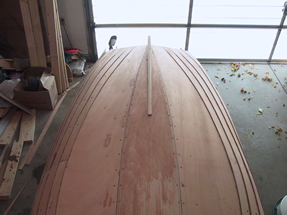 |
|
|
Overhead pictures showing skeg. |
|
|
|
|
|
|
|
|
|
|
|
|
|
|
|
|
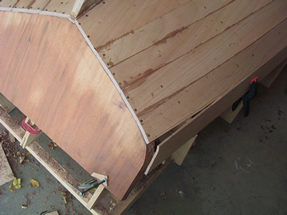 |
|
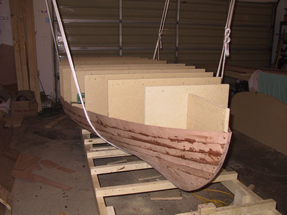 |
|
|
The shear planks were difficult where the bend
around the bilge is more severe. I tried steaming and this helped considerably. |
|
All station molds are unscrewed from the bearers.
Bicycle hooks are installed in the garage rafters and ropes used to lift
and invert the hull. |
|
|
|
|
|
|
|
|
|
|
|
|
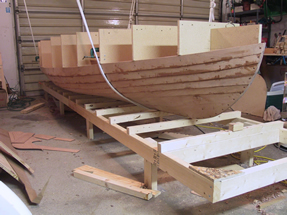 |
|
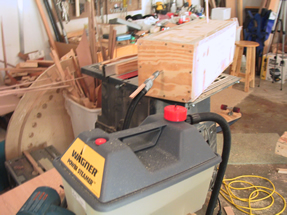 |
|
|
The combination of the hull and station
molds are quite heavy. The high density particle board by itself is quite
heavy. |
|
First attempt at a steam box for bending ribs.
The thought was to simply stuff rags in the end. This didn't keep the steam
in the box very well. |
|
|
|
|
|
|
|
|
|
|
|
|
|
|
|
|
|
|
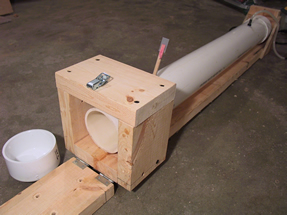 |
|
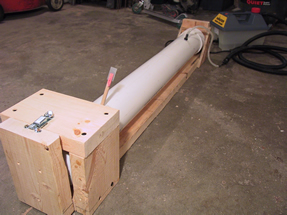 |
|
|
Next attempt was using a 4" PVC pipe with
cap. This worked quite well. |
|
The box with a hinged top on the end is used
to hold the cap on while under pressure. |
|
|
|
|
|
|
|
|
|
|
|
|
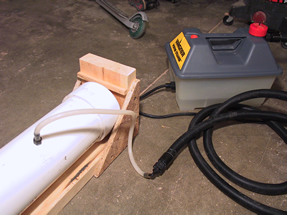 |
|
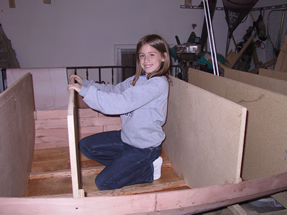 |
|
|
Instead of building a boiler, I used
a Wagner wall paper removal steamer. The handle is removed and a piece of
Tygon tube connects the boiler to the PVC pipe. A little weight on top of
the pressure will build a pretty darn impressive pressure inside the tube. |
|
One station mold removed in preparation of bending
the first set of ribs. Kayla can't wait. |
|
|
|
|
|
|
|
|
|
|
|
|
|
|
|
|
|
|
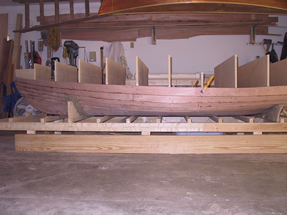 |
|
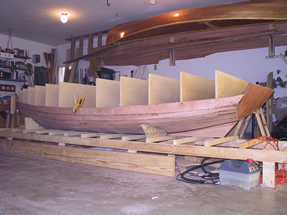 |
|
|
First set of ribs bent in. More on this in later
pages. |
|
|
|
|
|
|
|
|
|
|
|
|
|
|
|
|
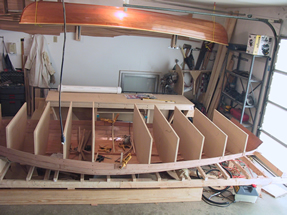 |
|
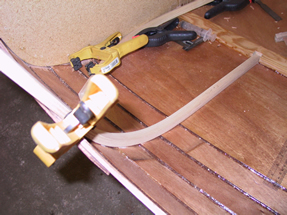 |
|
|
Probably a good idea to only unscrew
and remove one station mold at a time while installing ribs. This should
help preserve the hull shape. |
|
A mortise is cut into the chines to accept the
end of the ribs. |
|
|
|
|
|
|
|
|
|
|
|
|
|
|
|
|
|
|
 |
|
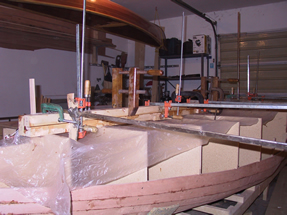 |
|
|
The mast is constructed by selecting
straight, clear 2" X 4" X 12' lengths of pine. The pieces are
ripped and ran through an edge jointer. |
|
Epoxy is used to laminate the pieces to a size
that a 3" diameter mast can be gotten out. |
|
|
|
|
|
|
|
|
|
|
|
|
|
|
|
|
|
|
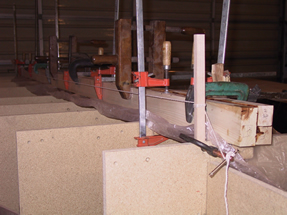 |
|
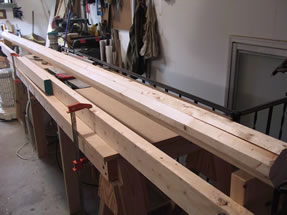 |
|
|
Because the tops of the station molds
are straight and plum, they are used as a flat surface to clamp the mast
pieces together. |
|
The mast is first eight sided using a tablesaw. |
|
|
|
|
|
|
|
|
|
|
|
|
|
|
|
|
|
|
 |
|
 |
|
|
A jig is made along the length of a workbench
a little bit longer than the mast. It will be used to hold the mast flat
while planing. |
|
|
|
|
|
|
|
|
|
|
|
|
|
|
|
|
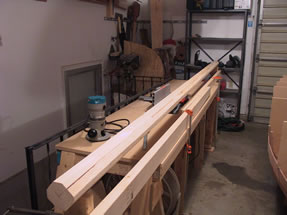 |
|
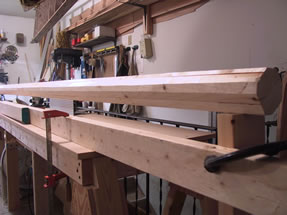 |
|
|
|
|
|
|
|
|
|
|
|
|
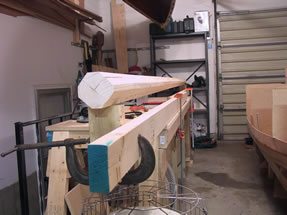 |
|
|
|
|
|
|
|
|
|
|
|
|
|
|
|
|
|
HOME |
|
|
|
PAGE-6 |
|
|
|
|
|
|
|
|
|
|
|
|













































